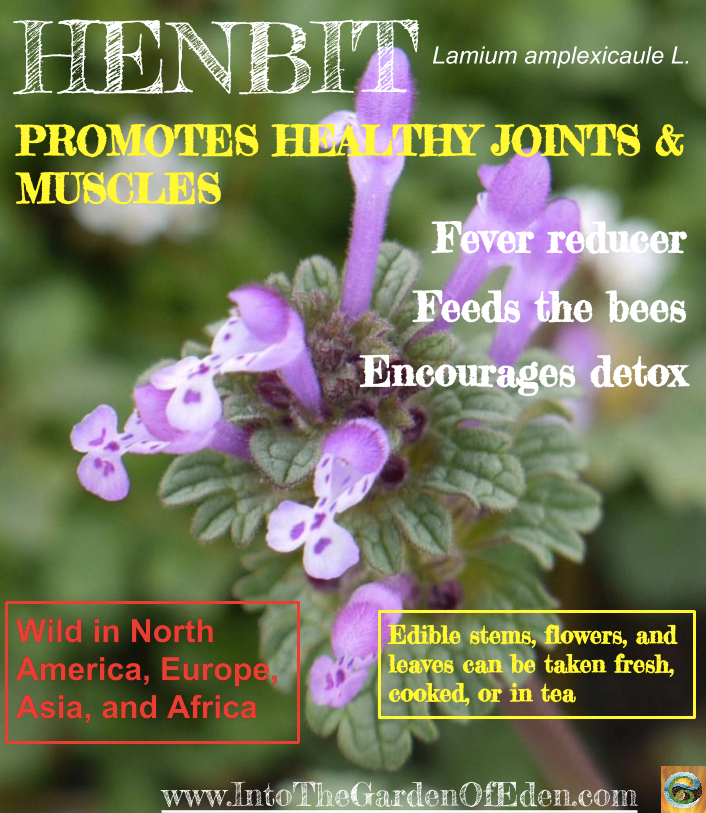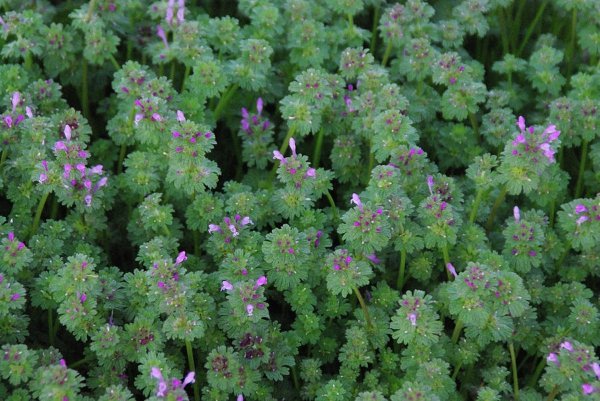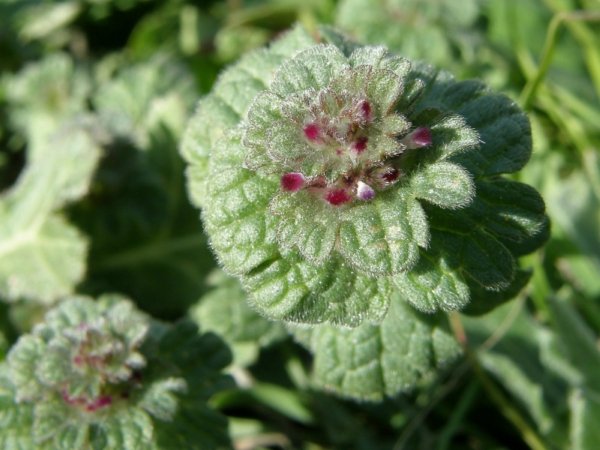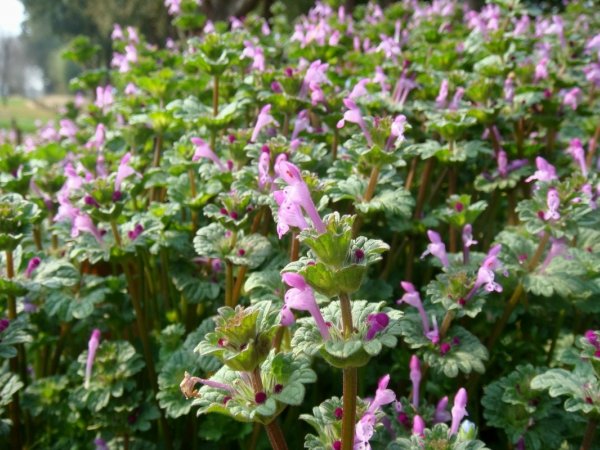Almost everyone recognizes henbit, though few know it by name (scientific name Lamium amplexicaule L.). It pops up unbidden in lawns and garden beds, but to treat this relative of mint as if it were a common weed is profane.

Henbit has square, hollow stems that can be green to purplish. The plant is sparsely covered with fine hairs. It has distinctive "collars" of oppositely-placed petals up the stem. Lower leaves are attached to the main stem by a wee little stalk called a petiole, but upper leaves are directly attached to the stem (that is to say, they are sessile). Leaves are broad and green, with deep veins and scalloped edges. Henbit has distinctive whorls of tiny, spotted, tubular pinkish to purple flowers.
Henbit is high in iron, fiber, and antioxidants.
Henbit has edible stems, leaves, and flowers. Add it to salads, sandwiches, and smoothies. Fresh leaves can also be used to make a tea!
A poultice of henbit can treat external bleeding, burns, bruises, stings, and wounds.
As the name suggests, chickens love it. It's also a source of nectar for bees, so keep it around to support bee populations.

Henbit has healing powers:
- anti-rheumatic = relieves chronic pain and discomfort in joints and connective tissue
- anti-inflammatory
- diaphoretic = induces sweating
- febrifuge & antipyretic = reduces fever
- gentle laxative
- astringent = causes the contraction of tissues
- vulnerary = useful in healing of wounds
- tea can be used to treat diarrhea


Considering the powerful medicinal properties of this sweet little herb, it makes sense to treat henbit with the respect it deserves!
Sources:
- Henbit: Top of the Pecking Order. by Green Deane from Eat the Weeds, and other things, too.
- Henbit: Lamium amplexicaule L. from Edible Wild Food.
- Henbit. by Morgan E. Judy from Clemson Cooperative Extension.
- Lamium amplexicaule | Henbit | Skinned Rabbits. from Survival Plants Memory Course.
www.intothegardenofeden.com

